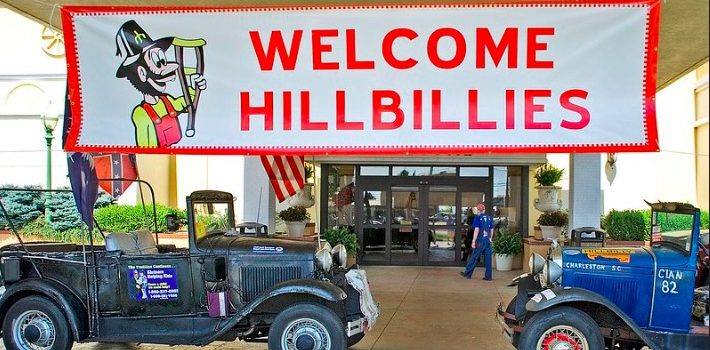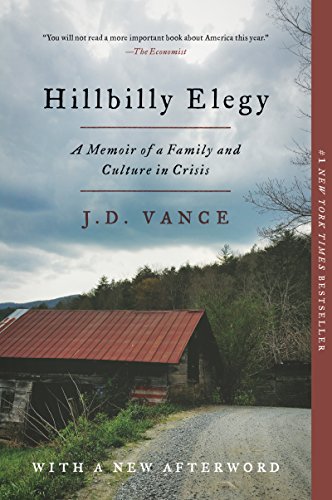

This article is an excerpt from the Shortform summary of "Hillbilly Elegy" by JD Vance. Shortform has the world's best summaries of books you should be reading.
Like this article? Sign up for a free trial here .
What are the primary attributes of hillbilly culture? How does the culture shape those who live in Appalachian Ohio?
The rural, white working-class in America is one of the most-studied, yet least-understood subsets of the country’s population. We’ll cover JD Vance’s assessment of hillbilly culture in Hillbilly Elegy.
The Study of Hillbilly Culture
In the wake of the 2016 presidential election, pundits, economists, and political commentators have struggled to make sense of why the once staunchly Democratic “hillbillies” of Appalachia have turned so sharply toward the Republican Party.
- Is it as simple as a racial backlash to the presidency of Barack Obama, the nation’s first African-American president?
- Is it a reaction to the elimination of manufacturing and industrial jobs across vast swathes of the Midwest and Upper South?
- Or is it a rejection of changing social and cultural norms that have left this community feeling isolated, alone, and unrepresented?
Beyond just partisan politics, Hillbilly Elegy sets out to examine why conditions have become so dire for this segment of the population. Through his narrative, JD Vance takes us through the history of how hillbilly culture and values spread beyond their heartland in Appalachia, why these norms and standards of conduct have become hindrances to upward mobility, and how hillbilly culture needs to change if it is to succeed in a rapidly changing nation and economy.
Social Decay
Hillbilly Elegy explores the cultural pathologies of the white working class in America through the personal experiences of its author, JD Vance. Growing up in a dysfunctional family and spending most of his childhood and teenage years in Middletown, Ohio, Vance saw firsthand the destructive attitudes and values of hillbilly culture—attitudes and values that he believes are primarily responsible for its perilous state. They include:
An aversion to hard work and thrift, as shown by the high levels of unemployment, indebtedness, drug addiction, and the widespread propensity of individuals in his community to lavishly spend beyond their means.
A resentful, insular culture that blames the rest of the world for its problems (or just denies their existence) instead of taking an introspective look at itself.
A “culture of honor” that demands the resolution of disputes through violence or, at best, harsh verbal abuse. These modes of conflict resolution may work in the hillbilly culture, but they leave these people utterly unprepared for a life outside it.
A destructive tendency to indulge in conspiracy theories that discourage meaningful participation in 21st-century society. These conspiracy theories can be both political and religious in nature. On the political side, for example, the widespread acceptance of “birtherism” (the belief that Barack Obama was born outside the U.S. or that he is a secret Muslim). On the religious side, Vance laments the stronghold that Young Earth creationism and disbelief in the theory of evolution have within this community.
A gloomy pessimism and fatalism that encourages people to abandon any hope that their conditions will ever improve. This attitude only encourages indifference and apathy, as well as poor work ethic: if things will never get better, there’s no point in working hard to try to improve your lot in life.
Vance laments these attributes of hillbilly culture and hopes hillbilly culture can “wake up” and return to its most positive qualities.
Hillbilly Culture in Crisis
As both a work of social commentary and an autobiography, Hillbilly Elegy takes us through Vance’s formative years where he witnesses one social dysfunction in hillbilly culture after another:
- Endemic poverty and high levels of unemployment.
- Widespread drug and alcohol addiction, chronicled most personally and painfully through Vance’s mother’s battles with substance abuse.
- Low levels of educational attainment (Vance himself is one of the few members of his extended family to attend college).
- Child abuse and domestic violence.
- Verbal abuse.
- Marital strife (vividly demonstrated by the five husbands Vance’s mother cycles through).
- Welfare dependency.
Vance shares the story of his struggles growing up within hillbilly culture as a means of articulating a broader social and cultural critique of the Appalachian white working class.
Hillbilly Justice
This is illustrated quite vividly by JD’s early education in the concept of “hillbilly justice,” an important aspect of hillbilly culture. During visits with his grandparents back to Jackson, Kentucky (where they still maintained close ties of kin and community), JD would be regaled with stories of the legendary and lawless exploits of his extended family and the world they came from.
- One uncle had assaulted a truck driver with an electric saw because the driver had called him a “son of a bitch.” The man nearly bled to death.
- A man in Jackson who had been accused of sexually assaulting a young girl was once found face-down in a lake, shot to death with sixteen bullets in his back.
- Even Mamaw herself had, at the age of 12, shot an attempted cattle rustler in the leg.
These tales of violent vigilante justice were presented to JD as positive examples of his community’s values. Mamaw and the family were proud of these stories and believed they reflected the very best of their hillbilly culture. As an adult, JD now sees how truly impressionable he was: his young mind internalized these values and he came to see violence as a legitimate and even honorable means of resolving disputes. This message would be reinforced by the people around him throughout his childhood and adolescence.
Learning to Brawl
The social context of hillbilly culture encouraged—in fact, demanded—that a young man like JD enforce and uphold hillbilly justice himself. Loyalty to family, upholding one’s honor, and demonstrating toughness were the core values of this “justice” system.
Accordingly, casual insults to one’s family (especially its female members) demanded a violent response: when a schoolyard bully directed some slander at JD’s grandmother, JD earned a bloody nose defending his family’s honor on the schoolyard.
The social expectation was that young men should resort to violence to avenge any insult towards the family, whether the insult was intended or not. When his older sister Lindsay was dumped by her boyfriend, custom demanded that JD brawl with her ex to maintain the family’s dignity. Even though he proceeded to lose the fight (badly), he was rewarded for his display of violence by Mamaw, who told him that he had done the correct and honorable thing.
Later, Mamaw would teach JD fighting tactics designed to inflict maximum damage on his opponents. While she encouraged him to only fight to defend himself, she generally approved of the use of violence to solve disputes, telling JD, “Sometimes, honey, you have to fight, even when you’re not defending yourself. Sometimes it’s just the right thing to do.”
Hillbilly Culture in Decline
This tumultuous period in young JD’s life occurred against the backdrop of the broader social, moral, and spiritual decay of the hillbilly culture that had defined his family’s experience.
When JD was born in 1984, Middletown was still a respectable, prosperous industrial town. It had a vibrant shopping center downtown, long-established businesses that had been going strong since World War II, and most importantly, a major employer in the Armco steel mill.
Over the course of JD’s upbringing, the town changed dramatically for the worse. The once-bustling downtown became blighted by abandoned shops and pockmarked by broken windows; respectable family businesses were replaced by cash-for-gold stores and pawnshops; and Main Street degenerated into a haunt for drug addicts and dealers.
In a potent symbol of the town’s rise and fall, an opulent Victorian mansion that was once home to the wealthiest family in the county was purchased for a mere $225,000: less than what a one- or two-bedroom apartment would cost In Washington, D.C. or Manhattan. Where the once-prominent mansions weren’t been sold for pennies on the dollar, they became chopped up into small apartments by absentee landlords.
What transformed this blue-collar, seemingly prosperous community into a bleak post-industrial wasteland?
Hillbilly Culture: Deemphasizing Education
Looking back, JD sees how little his community and hillbilly culture emphasized education.
Growing up in Middletown, a college education was a distant and remote pipe-dream, certainly not something parents prepared their children for or treated as an expected life experience.
What JD now knows is that all across other regions of the country, parents were setting their children up to attend college and start white-collar careers. Tutors, SAT prep courses, guidance counselors, and all the other tools of the college-acceptance game were simply unknown to the children of his community. They weren’t losing this competition—they just weren’t playing the game at all. No one that JD knew at this time, for example, had gone to a four-year college.
Once again, the statistics paint a damning picture: 20 percent of the town’s high school freshman cohort won’t graduate in four years. Of those that do graduate, most won’t go on to college, and those that manage to make it to college almost certainly won’t go out-of-state.
As an adult, JD attributes this poor record of educational attainment to the hillbilly culture, a culture of low expectations. Children see poverty, high unemployment, and drug addiction all around them growing up, often in their own immediate families. They have poor models of adult behavior, so they don’t come to expect much from themselves. He certainly saw this in his own life: even when he got poor grades, there was never any sense that there would be negative consequences for failing to achieve academically.
“Hard Working” Welfare Cheats
Beyond the raw economic misfortunes of the town and hillbilly culture, JD began to notice that hard work and initiative were almost entirely absent in many of the adults around him. Despite this, people made a point of playing lip-service to these ideals, even when they seldom lived up to them in practice.
He recalls one woman who was always hounding Mamaw, either to borrow her car or sell her food stamps to Mamaw for cash. Despite this woman’s lifestyle of welfare dependency, her eagerness to defraud the social safety net, and the fact that she’d never worked a day in her life, she viewed herself as a model of industriousness. Indeed, she saw herself as a worthy recipient of government help, while it was those “other” lazy moochers who were gaming the system and making it hard for decent, honest people to get by.
There was simply an absence of work and an acceptance of unemployment or underemployment as a way of life. 30 percent of young men in Middletown work under 20 hours per week.
Hillbilly Culture’s Cognitive Dissonance
JD now sees the lies and blame-shifting as ways of coping with massive cognitive dissonance: the gap between the community’s professed values and the actual lived reality of their lives. There must be some oppressive, outside force at work if so many self-described hardworking and industrious people are mired in poverty and social dysfunction. Believing in a nefarious conspiracy that’s keeping you down is far more comforting than confronting the true scale of the devastation in your life. There’s massive power in delusion.
Destructive Values
The deindustrialization of Appalachia has led to a serious lack of opportunity for people entering their prime working years. People can’t work when there are no jobs to be had: the Armcos of the world aren’t going to provide employment for all the young men to support a family the way they could have a generation ago.
But based on his own experiences, JD now believes that today’s hillbillies have responded to the economic crisis in their communities the wrong way: by building a set of values that justifies and even celebrates the avoidance of work, while blaming nefarious outside forces for their problems.
“An Amateur Sociologist”
As a teenager, JD got a job at a local grocery store. From this vantage point, he got a firsthand look at many of the social ills that he would later identify as key sources of the problems plaguing the hillbilly community.
He noticed that poorer customers tended to pile their carts with unhealthy prepackaged, canned, or frozen foods. The more affluent customers, meanwhile, bought more fresh meat and produce. More importantly, he saw how financially irresponsible so many of his neighbors were. Many of them were dependent on government assistance, but they were adept at gaming the system.
For example, they would use their food stamps to buy soda, and then sell them at a discount for cash. It was all profit, since they weren’t paying for the soda in the first place—the government was. Even as a teenager, he could astutely observe that people living off cash assistance programs were living at a level of material comfort that he couldn’t even dream of.
He saw destitute people still throwing their money away on luxury items like iPhones and big screen TVs, usually financed through high-interest credit cards and payday loans. Nobody seemed to save for a rainy day: as soon as you got some money, you squandered it on something frivolous.
There were other examples of self-destructive behavior in the community of hillbilly culture, outside of the customers at the grocery store.
- There was the neighbor who got high on pain meds, passed out in the bathtub with the water running, and destroyed the bottom floor of her home through water damage.
- Then there was the neighborhood “welfare queen” with seven children, one of whom ended up in an abusive relationship, and another one who was arrested shortly after finishing high school. Vance notes the kids never really had a chance.
Sadly, stories like this were all too common in hillbilly culture.
The Trouble With the Welfare State
He really felt the injustice when he began seeing the taxes that were being deducted from his wages: taxes that were being used to pay for the very same welfare programs that his customers were using to cheat and avoid working. Vance marks this as the beginning of his shift to Republican Party-stye conservatism and general ideological opposition to the modern welfare state.
He’d been raised in a household and hillbilly culture that had at least nominal loyalty to the Democratic Party (traditionally the party of working people). But these experiences were beginning to teach him that well-meaning assistance programs created too many disincentives to hard work and reinforced what he saw as the worst features of hillbilly culture.
JD argues that this disillusionment with the policy excesses of the New Deal and Great Society is what turned working-class whites in Appalachia and the South away from the Democratic Party, beginning in the 1970s. He believes that this, not religious/cultural conservatism or backlash to the Civil Rights Movement, is what reshuffled the partisan landscape of American politics.
———End of Preview———

Like what you just read? Read the rest of the world's best summary of "Hillbilly Elegy" at Shortform . Learn the book's critical concepts in 20 minutes or less .
Here's what you'll find in our full Hillbilly Elegy summary :
- The hallmarks of hillbilly culture and why they hold people back
- How JD Vance broke out of his hillbilly childhood and graduated from Yale
- Why the author thinks hillbillies might be beyond saving







I lived in Middletown OH during my childhood until escaping in 1984. At that time it was already in a steep death spiral. You really have absolutely no idea what you’re talking about. JD Vance seems like one of the typical low life denizens that brought the community down, yet now has transformed into one of the “elites” that sold it out to foolish foreign investors who didn’t realize they were buying a pig in a poke. There were a few nice people there, but overall it was a village of idiots where the bad drove out the good, until it became the vacant bankrupt shell of today.